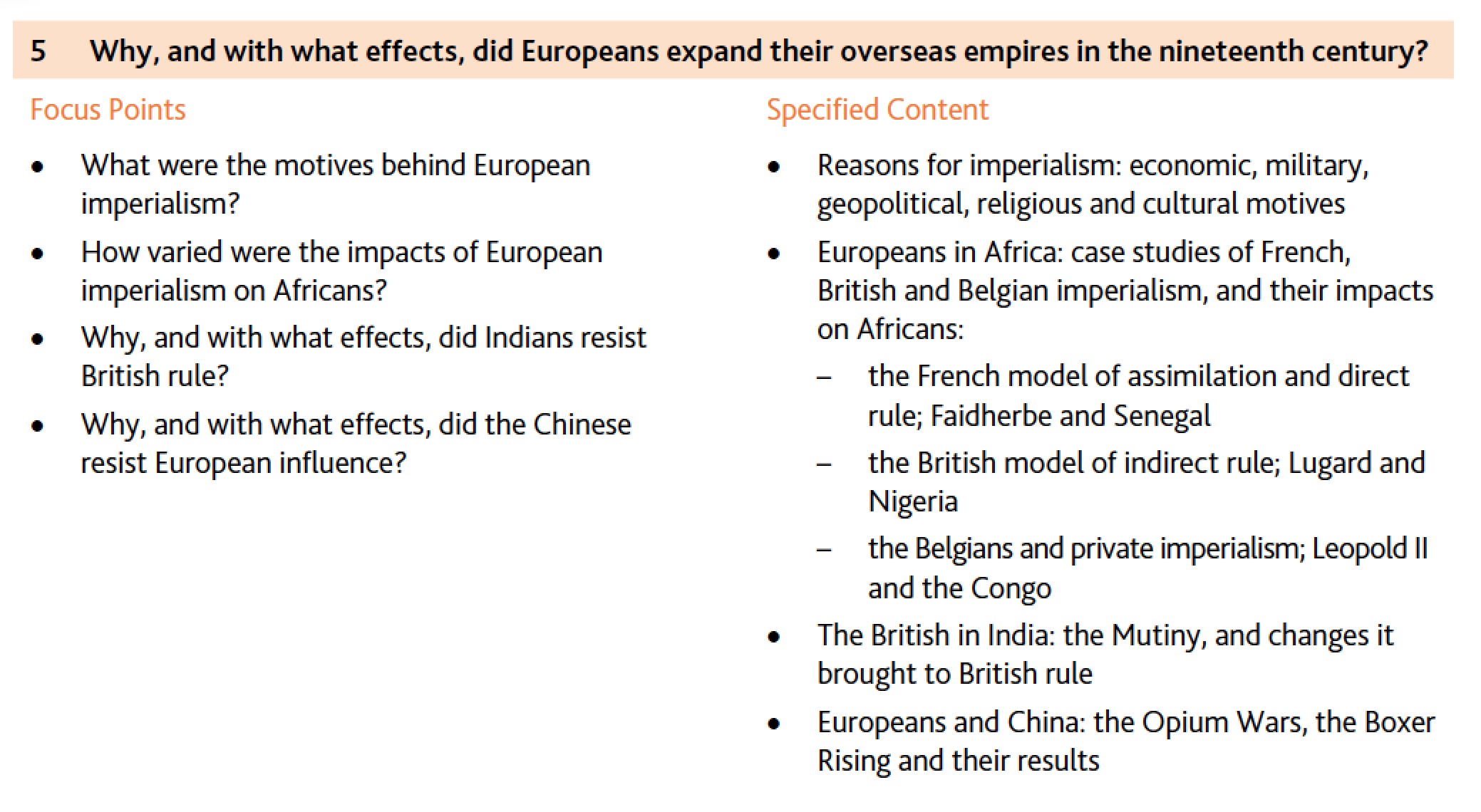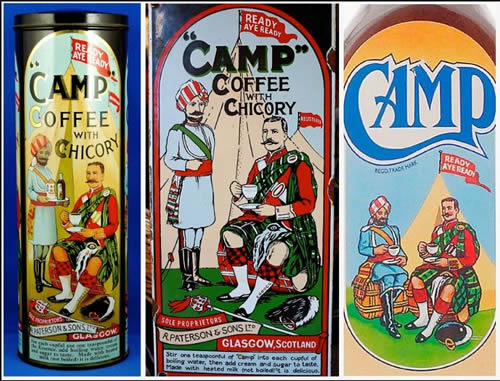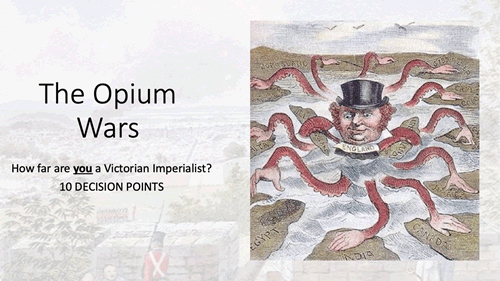Transform your history classroom
ActiveHistory provides educational, award-winning interactive simulations, decision-making games, self-marking quizzes, high-quality worksheets and detailed lesson plans for the school history classroom. All resources have been designed by full-time history teacher Russel Tarr.
An ActiveHistory subscription provides everything you need to construct and deliver a History course from start to finish for the entire 11-18 age range!
These consist not just of lesson plans, worksheets and teacher notes, but also multimedia lectures and interactive games and historical simulations ideal for remote learning and self-study.
Why, and with what effects, did Europeans expand their overseas empires in the nineteenth century?.
This study unit is designed around the focus points and the specified content of the Cambridge IGCSE History syllabus:

1. Africa
What were the motives behind European imperialism in Africa?
In this lesson, students investigate the key questions "Why did Europeans have little interest in colonising Africa before 1850?" and "What were the motives behind the 'Scramble for Africa' thereafter?". Using the information provided, they produce an illustrated flowchart or infographic which highlights the connections between four main groups of factors. As an extention activity, each member of the class isgiven a different name to research from a list of explorers: in a subsequent lesson, groups of students should compare their findings, agree which one is the most important overall and share their choice with the class so that everyone can take additional notes.
There are references within this activity to "If" by Rudyard Kipling. I like to play my students this video of Michael Caine reading the poem, especially since they are usually familiar with him from his starring role in "Zulu"!
10-question test: Europeans in Africa
A short factual test to consolidate knowledge from the previous lesson.
How varied were the impacts of European imperialism on Africans? | teacher notes
In the 1880s Europeans accelerated their colonisation programmes in a process which became known as the "Scramble for Africa". Following the Berlin Conference (1884-85), the African continent was randomly divided into about fifty countries. These new borders took no account of ethnic and religious groupings, creating instability and violence in many African countries up to the modern day. In this lesson students will investigate this process through three case studies, and then compare and contrast each using this
- France: assimilation and direct rule > Faidherbe and Senegal
- Belgium: private imperialism > Leopold II and the Congo
- Britain: indirect rule > Lugard and Nigeria
Comparisons and Contrasts: French, Belgian and British approaches to Empire
Using the information from the previous activity, students use this Venn Diagram template to highlight contrasts and comparisons between the different methods used by the French, British and Belgians. There is also a completed teacher version available.
12-question test: Europeans in Africa
A short factual test to consolidate knowledge from the previous lesson.
Sourcework: King Leopold II and the Congo
1. Study Sources A and B. Does Source A prove that Leopold was lying in Source B? Explain your answer using details of the sources and your knowledge.
2. Study Sources C, D and E. Does Sources C and D make Source E surprising? Explain your answer using details of the sources and your knowledge.
3. What is the message of Source F?
2. India
Why, and with what effects, did Indians resist British rule?
British involvement in India began with the East India Company. Its powerful Governor Generals came to exercise indirect rule through its own private army. In this activity students compare and contrast the roles of Lord Bentinck and Lord Dalhousie in precipitating the Indian Mutiny of 1857. They then investigate two key questions:
a. Describe the outbreak and spread of the Indian Mutiny in 1857.
b. Why did the Mutiny fail?
 Extension / Homework activity: What's in a name? What's in a logo?
Extension / Homework activity: What's in a name? What's in a logo?
The events of 1857 have been described at different times in different ways by different people.
The Sepoy Mutiny | The Indian Mutiny | The Great Rebellion | The Revolt of 1857 | The Indian Insurrection | The First War of Independence
Students consider - perhaps after researching the proper definition of some of these terms - which they think is the most accurate. They then proceed to consider the evolution of a famous company logo and consider what this tells us about changing attitudes to Empire.
Matrix Exercise: The results of the Indian Mutiny
Students are presented with a detailed list of consequences which they then organise into a matrix diagram which will enable them to answer the following two questions:
c. 'British rule in India changed significantly after the Mutiny.' How far do you agree with this statement?
c. The Indian Mutiny benefited India rather than harmed it. How far do you agree with this statement?
15-question test: The Indian Mutiny
A short factual test to consolidate knowledge from this part of the unit.
Sourcework: Was the British reaction to the Indian Mutiny justified? | Model answers for final three questions
A fully-developed sourcework exercise which could take up to two hours. However, I instructed students as a homework exercise to do the final three questions. I then went through these providing them with some model answers which I wrote myself.
3. China
 The Opium Wars: Multimedia Presentation / Decision-Making Exercise (22 slides plus video clips)
The Opium Wars: Multimedia Presentation / Decision-Making Exercise (22 slides plus video clips)
"You will be presented with a series of issues which were controversial at the time and remain so today. You should make choices based on what you think is the most appropriate course of action according to your own preferences. At the end you will be told which political party/person you most closely resemble. At several points in the exercise your scores will be calculated and the class will be rearranged to sit on four tables, from the highest to the lowest scoring teams. At the end, each table will be told more about what exact political party / key leaders your views most closely represent".
Teacher Tip: At the end of the exercise, get students to calculate their overall scores and use these to divide them into four roughly even groups:
- Conservative Imperialists (Benjamin Disraeli) = Highest scoring students
- Conservative Traders (Joseph Chamberlain).
- Liberal Imperialists (Lloyd George)
- Liberal Anti-Imperialists (Gladstone, Bright, Derby) = Lowest scoring students
Encourage students to conduct some research on their nominated group / character and feed back with their findings in a later lesson.
Letter to Queen Victoria from Commissioner Lin protesting against the Opium Trade
Useful for when it is mentioned in the presentation above, you could print this off and give it to students to consider at the appropriate point in the exercise to help them decide how to react.
Sourcework Questions: The Opium Wars | Model answers
A fully-developed sourcework examination. I set questions [2] and [6] as a homework exercise and produced model answers myself to share with students afterwards.
The Boxer Uprising
"
Read carefully through the following account, then: [1] Include at least THREE relevant, useful, captioned images into this document (in the same format as the one already included); [2] Add additional notes from the video. Highlight all these additions in yellow.
Sourcework Questions: The Boxer Uprising
Two examination-style questions, complete with model answers to provide with students during the feedback phase.
20-question factual test: Europeans in China
To consolidate knowledge. 10 questions on the Opium Wars, 10 questions on the Boxer Uprising.
Revision Game: 54 Questions

© 1998-2025 Russel Tarr, ActiveHistory.co.uk Limited (Reg. 6111680)
1 Torrin Drive, Shrewsbury, Shropshire, SY3 6AW, England
Privacy Policy | Contact






